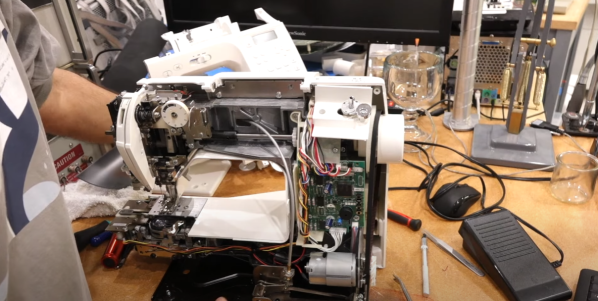Even the most talented engineers can be stymied by simple repair projects. In this case, repairing a broken sewing machine has [CuriousMarc] all tangled up. [Marc] is probably best known as a part of the team who managed to restore and boot up an apollo guidance computer, but he’s worked with plenty of other vintage machines.
This problem hit much closer to home. [Marc’s] daughter wanted to sew a Halloween costume. The machine would boot up fine, but when attempting to sew, it would make a bit of noise, then beep and display “The safety device has been activated”. Not very helpful.
The sewing machine in question is called “Baby Lock Decorator’s Choice” and is manufactured by Brother for Juken. [Marc] of course dug in, and quickly found himself stymied by a clamshell case that just didn’t want to come apart. This is the point where many of us would apply just a little too much force when prying and be rewarded with a broken case.
[CuriuosMarc] is thankfully the more patient sort. Rather than become [FuriousMarc], he carefully persevered to find a hidden screw holding things together. The screw could only be accessed by inserting a screwdriver through a tiny access hole on the front chassis of the machine.
With the screw out, a couple of molded clips were all that held the case sides together. After popping them, [Marc] was finally able to fix the real problem: A toothed belt that had slipped off its cog. That’s it — just a loose belt. The cryptic error code most likely was due to the machine realizing it the motor was on, but the machine wasn’t moving – which would generally indicate something stuck or tangled in the thread path.
This type of repair would be much easier if service manuals were readily available. We did a quick search for this model but didn’t find anything freely available.
Have you gotten stuck by a simple repair? Tell us about it down in the comments.
Continue reading “Curious Marc Takes On Sewing Machine Repair”















